A songwriting template is the backbone of any musical composition; it dictates how a song unfolds and connects with the listener.
Song templates guide the arrangement of musical and lyrical elements of your tracks, creating a cohesive narrative.
They can enhance the emotional impact of a song, ensure clarity in storytelling, and maintain listener engagement.
As a music producer, understanding the most common songwriting templates and song structures is crucial to creating hit songs that resonate with audiences and succeed on streaming platforms.
Throughout this article, we’ll break down:
- Understanding the basics of songwriting ✓
- The role of a songwriting template ✓
- Exploring the most common song structures ✓
- Incorporating music theory to help you write a song ✓
- Crafting verses, choruses, and pre-choruses ✓
- Developing chord progressions and melodies ✓
- How to come up with song ideas in your own style ✓
- Tailoring songs for streaming platforms ✓
- Overcoming common song writing challenges ✓
- Understanding time signatures & rhythms ✓
- Refining and polishing your song ✓
- Much more about each song template ✓
After reading this article, you’ll have a comprehensive understanding of each different songwriting template and the knowledge to apply them effectively.
You’ll be equipped to create a hit song that reflects your vision and captures listeners.
This mastery of songwriting templates and structures will be your key to creating music that stands out in the competitive landscape of digital music production.
So, let’s dive in…
Table of Contents
- Introduction to Songwriting Templates
- The Fundamentals of Song Structure
- The Verse-Chorus Structure: A Popular Choice
- Diving Deeper: Chord Progressions and Melodies
- Exploring Different Styles: Finding Your Own Styles
- The Songwriting Process: Writing Music Like a Pro
- Adapting Songwriting Templates for Streaming Platforms
- Overcoming Challenges in Songwriting
- The Technical Side: Time Signatures and Rhythms
- Final Touches: Refining Your Song
- Bonus: The Unison Songwriting Secrets Pack
- Songwriting Template: Final Thoughts
Introduction to Songwriting Templates
Whether you’re an experienced songwriter or complete beginner, your first song or hundredth, songwriting is an art and a science. When it comes to songwriting templates, it’s essential to understand their impact on most songs so you can create epic hits. Let’s break it down so you can utilize any songwriting template like a professional.
-
Understanding the Basics of Songwriting

Songwriting is the backbone of music creation.
It involves combining lyrics, melodies, and musical arrangements to convey emotions and stories.
At its core, songwriting requires an understanding of basic elements like:
- Melody
- Harmony
- Rhythm
These components work together to create a song’s structure, which serves as a roadmap for both the artist and the listener.
Every great song begins with a main idea…
This idea is then developed into a structured format, commonly known as a song template.
Song templates guide musicians in arranging their ideas coherently.
They provide a framework for where to place verses, choruses, and bridges 一 ensuring that the song flows seamlessly from one section to another.
Effective songwriting also involves knowing how to write songs that resonate with the audience.
This means understanding what makes a song relatable and how to craft song lyrics and melodies that capture the listener’s attention.
The songwriting template is a powerful tool in achieving this, as it allows for consistency and creativity within a structured format.
-
The Importance of a Songwriting Template
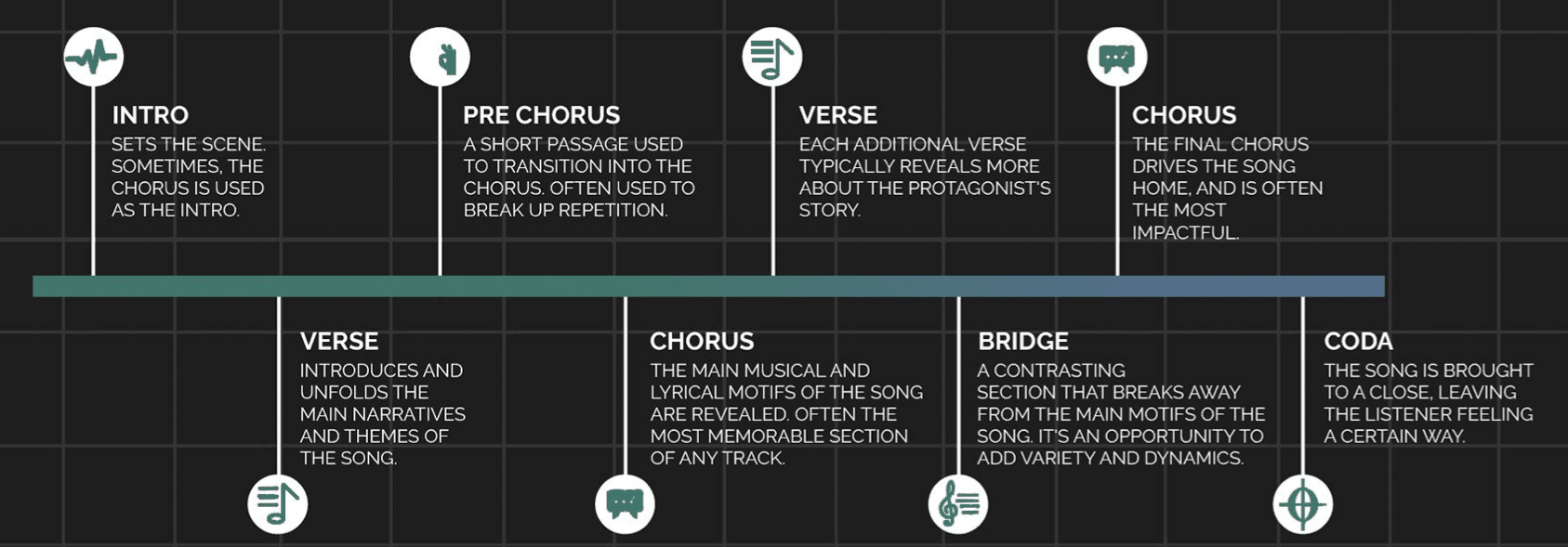
Songwriting templates are essential in the music creation process.
They offer a standardized approach to song structure, ensuring that key elements are not overlooked.
For instance, a songwriting template might outline a typical verse-chorus-verse-chorus-bridge-chorus structure.
This is a very common song structure in popular music.
Using a songwriting template doesn’t stifle creativity; it provides a solid foundation upon which to build and come up with mesmerizing ideas.
It helps music creators focus on the creative aspects of songwriting, such as developing memorable melodies and engaging song lyrics.
All without losing track of the song’s overall structure, of course.
A well-structured song is more likely to connect with audiences and perform well on streaming platforms.
A songwriting template ensures that each part of the song serves its purpose, whether it’s building tension in the pre-chorus or delivering a powerful message in the chorus.
The Fundamentals of Song Structure
Song structure is the skeleton of a song. Let’s explore the most common song structures and the role of music theory in songwriting so you can write songs like a pro.
-
Exploring The Most Common Song Structures

In songwriting, familiarity with each common song structure is pivotal, serving as the blueprint for how a song is organized.
One of the most common song structure variations is the Verse-Chorus structure, a staple in pop music and beyond (most like some of your favorite songs).
This common song structure typically alternates between distinct verses and a repeated chorus.
Each serves a very unique purpose, which you must be familiar with.
The verse offers narrative progression and thematic development, while the chorus provides the emotional and lyrical climax of the song.
Another common song structure is the Verse-Pre-Chorus-Chorus format.
In this song structure, the pre-chorus acts as a build-up to the chorus, heightening tension and anticipation (very popular in pop songs).
This common song structure is effective in creating a sense of fluidity and intrigue within the song.
- The pre-chorus 一 Introduces a shift in melody or harmony, setting the stage for the chorus.
- The Chorus-Verse structure 一 Flips the traditional format (less common, but equally impactful).
It leads with the chorus to immediately capture the listener’s attention before delving into the verse.
The Verse-Chorus-Bridge structure adds another layer of complexity.
After cycling through the verse and chorus, this common song structure introduces a bridge; a section that provides a contrast to both the verse and chorus.
The bridge offers a moment of departure, often bringing a new perspective or twist to the song’s narrative before returning to the familiar chorus.
Each of these structures (Verse-Chorus, Verse-Pre-Chorus-Chorus, Chorus-Verse, and Verse-Chorus-Bridge) offers a unique way to craft a song’s narrative.
This ensures, when you write a song, that it resonates with listeners across different music genres (like pop music) and streaming platforms.
-
The Role of Music Theory in Song Structure
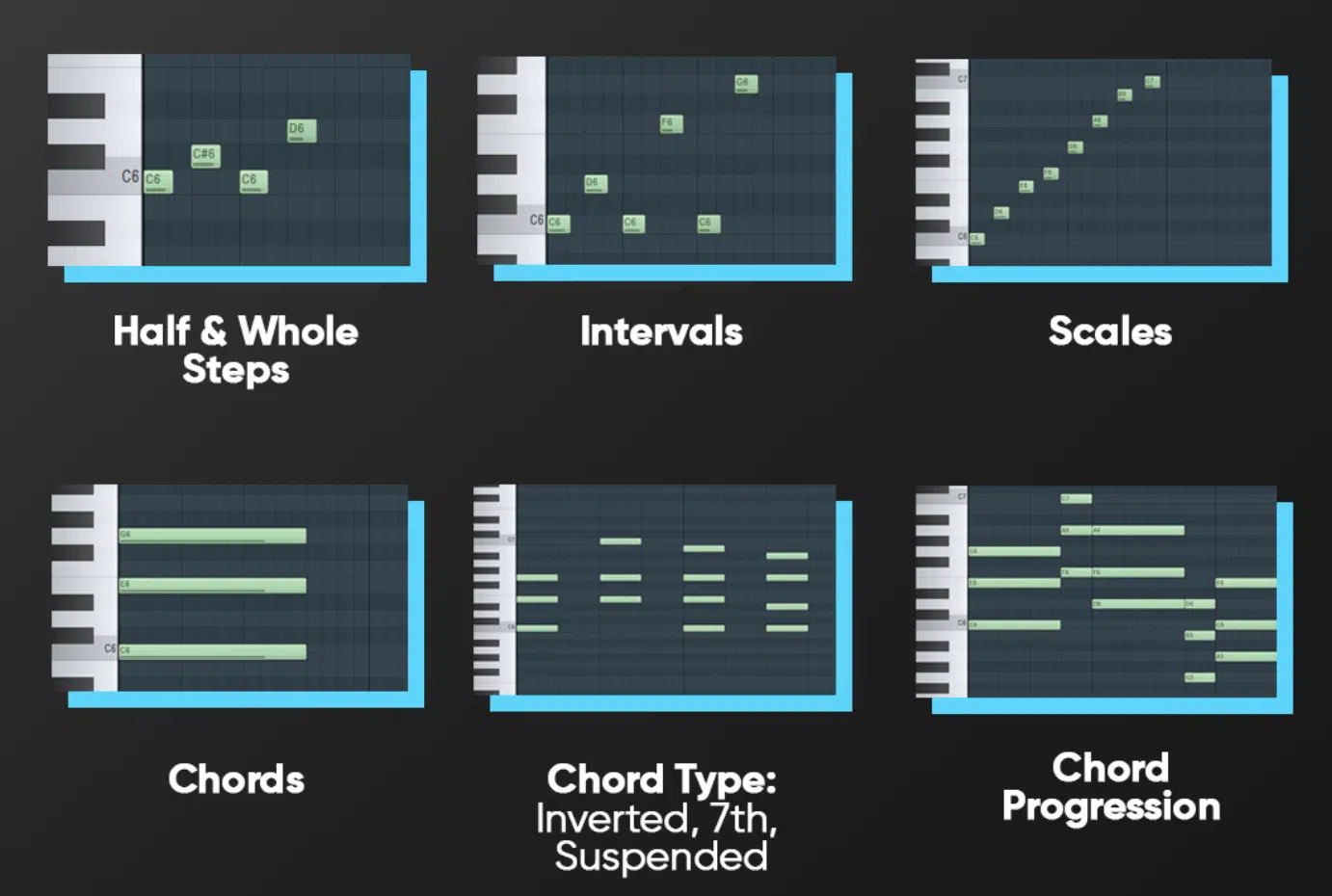
Music theory plays a pivotal role in song structure.
It provides songwriters with the knowledge of how different musical elements interact, such as:
- Chord progressions
- Time signatures
- Scales
When you write a song, this understanding is crucial to ensure it’s harmonically fluid, rhythmically coherent, and sounds good.
By applying music theory principles, songwriters like yourself can create a hit song that is not only technically sound but emotionally impactful.
For example, using a minor key for a melancholic song or employing a specific chord progression to build tension before the chorus.
Remember, you shouldn’t use the same chord progression for every type/genre of song.
Music theory acts as a guide in the songwriting process 一 ensuring that your songs resonate with their intended emotional tone.
-
Pro Tip: Musical Elements (Key Elements To Incorporate)
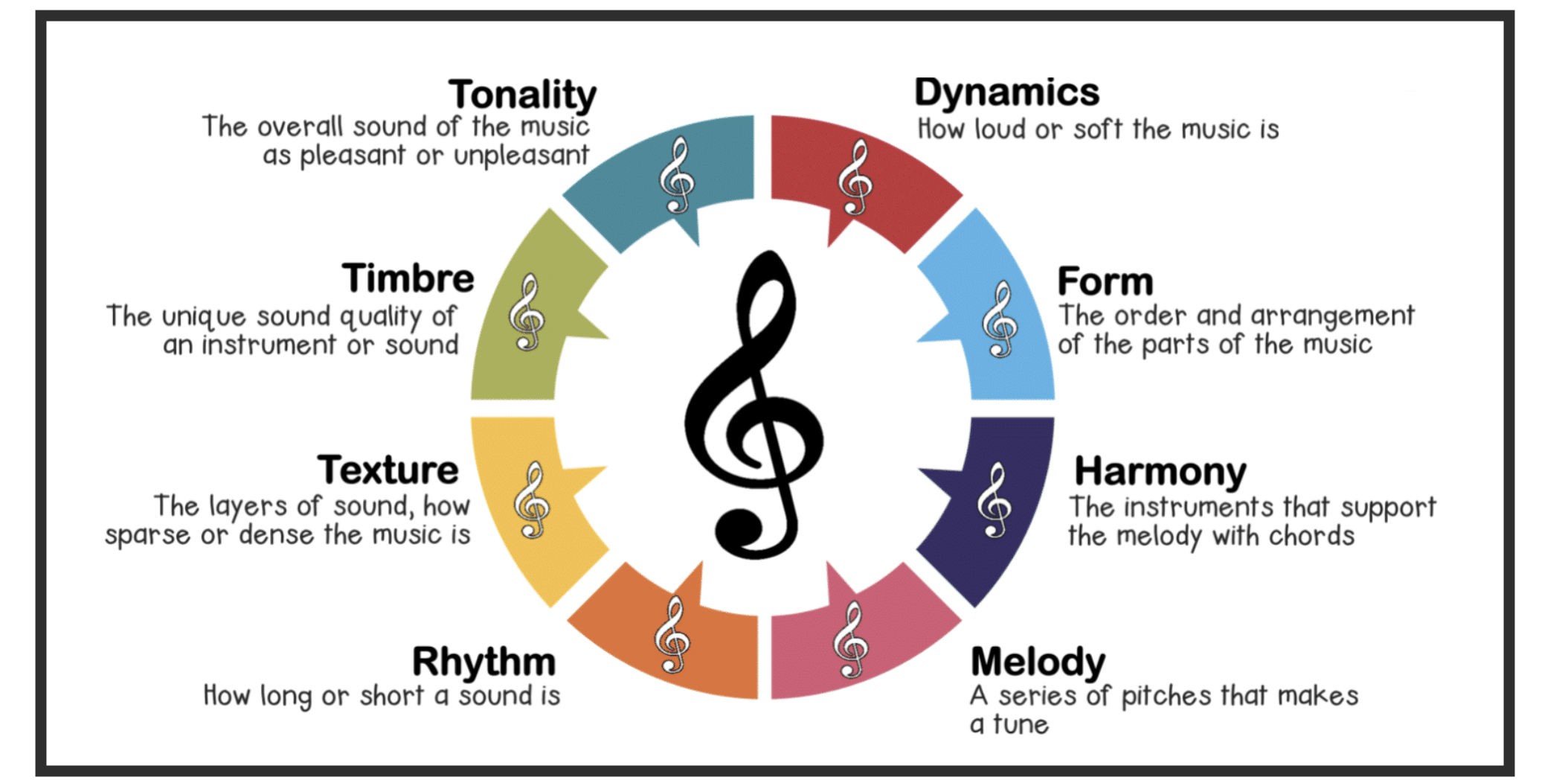
When crafting a song, several key musical elements must be considered.
These include:
- Melody 一 A strong melody is essential to create a memorable song.
- Harmony 一 Adds depth and texture.
- Rhythm 一 Gives your song its pulse.
- Dynamics 一 Control the song’s volume and intensity.
These musical elements must be skillfully balanced to create a song that instantly captivates the listener and leaves a lasting impression.
Utilizing these musical elements effectively is a hallmark of a well-constructed song, as they collectively contribute to its overall impact and memorability.
The Verse-Chorus Structure: A Popular Choice
The verse-chorus structure is a cornerstone in modern songwriting. Let’s examine how to master each of its components.
-
Crafting the Perfect Verse

When you write songs, the verse in a song sets the stage.
It’s where the story begins and where listeners get drawn into the song’s narrative, which is important for complete beginners and experts alike.
A well-crafted verse uses descriptive language, establishing the tone and context.
In digital music production, verses (typically two or three verses) often vary in their musical arrangement.
They offer different melodies or chord progressions to maintain the listener’s attention.
In the songwriting process, the verse is where you introduce your main ideas/themes.
It’s crucial to use a strong chord progression that complements the lyrics 一 creating a cohesive and engaging narrative.
You shouldn’t implement the same chord progression for every type of song.
NOTE: The first verse, in particular, is vital as it’s the listener’s first encounter with the songs overall vibe. If you want your song to become one of their favorite songs, it’s vital to instantly captivate them.
Verses should flow naturally into the next part of the song, usually the pre-chorus or chorus.
This transition is an essential aspect of the song structure, as it needs to feel seamless while preparing the listener for the upcoming section.
Using varying verse structures, like a second verse that builds upon the first, adds interest and depth to the song.
-
Creating a Memorable Chorus

The chorus is the heart of the song, containing its most memorable melody and lyrics.
It’s where the song’s main message or emotion is conveyed most powerfully.
A great chorus is catchy and stays in people’s heads (think of pop songs) 一 making it a major key element in hit songs.
In terms of the songwriting template, the chorus usually follows the verse and is designed to be more straightforward and repetitive than the verse.
NOTE: This repetition is what makes the chorus memorable.
It often highlights the song’s hook, a catchy phrase or melody that defines the song.
For a chorus to stand out, it should contrast with the verse in terms of:
- Melody
- Rhythm
- Intensity
This contrast creates a dynamic shift in the song, capturing the listener’s attention.
The chorus should be easily singable, making it more likely for the song to resonate with a wide audience.
-
The Pre-Chorus: Building Tension

The pre-chorus serves as a bridge between the verse and chorus, building tension and leading up to the chorus.
In many popular music tracks, the pre-chorus introduces a change in musical dynamics or chord progressions.
It signals a shift in the song’s overall narrative.
In the songwriting template, the pre-chorus often employs different melodies or rhythms from the verse.
This change helps to elevate the song’s emotional state 一 preparing the listener for the climax in the chorus.
NOTE: The pre-chorus can also include lyrical build-up, adding extra anticipation.
A well-executed pre-chorus enhances the impact of the chorus.
It’s an opportunity to add complexity and depth to the song, ensuring that the transition to the chorus feels natural and satisfying.
The pre-chorus is a key element in creating a song that engages and holds the listener’s attention throughout.
Diving Deeper: Chord Progressions and Melodies
Chord progressions and melodies are the foundation of a song’s emotional and harmonic content. Let’s explore how to craft these crucial elements.
-
Common Chord Progressions: Breaking it Down

Chord progressions are sequences of chords that provide the harmonic backbone of a song.
Common chord progressions are found in many popular songs, providing a familiar sound that resonates with listeners.
For instance, the four chords progression is a staple in pop music, known for its simplicity and emotional effectiveness.
Understanding common chord progressions is a vital skill for songwriters.
These chord progressions:
- Provide a foundation for the melody
- Set the song’s mood and tone
Whether it’s a joyful, sad, or contemplative song, the chord progression plays a significant role in conveying these emotions.
Experimenting with different chord progressions can add interest to any song.
NOTE: While it’s beneficial to know the most common structures, incorporating variations or less conventional progressions can help a song stand out.
Balancing familiarity with innovation is key in producing compelling music.
-
Designing a Memorable Melody
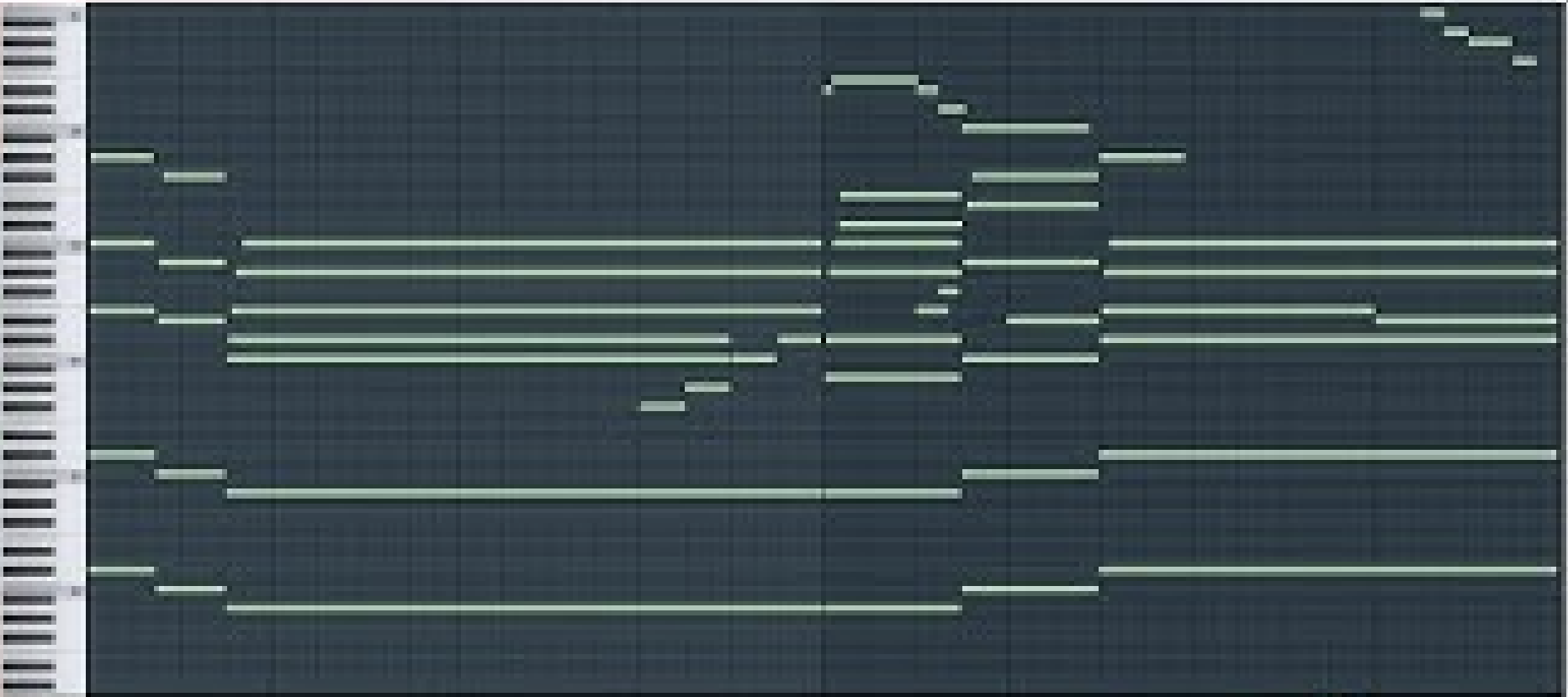
A melody is the sequence of notes that is sung or played over the chord progression.
It’s what people often remember most about a song.
A memorable melody is one that is both catchy and emotionally evocative 一 capturing the essence of the song’s message.
Crafting a good melody involves understanding the nuances of musical elements.
It should flow naturally and be easy to sing or hum.
Melodies vary in rhythm and pitch, creating a sense of movement and expression.
They often reflect the song’s emotional core, resonating with listeners on a deeper level.
Utilizing different melodies in various song sections (like the second verse or chorus) keeps the song dynamic and engaging.
Exploring Different Styles: Finding Your Own Styles

One of the joys of the songwriting process is the ability to explore different styles and find your own unique sound.
This is especially important when beginners start songwriting, as it will help them find their signature sound and style.
This exploration allows you to infuse your hit song with personal influences and preferences 一 making them deeply personal.
Whether it’s incorporating elements of pop music, rock, or electronic genres, experimenting with different styles can lead to innovative and refreshing music.
Finding your own style also involves experimenting with different:
- Song structure templates
- Chord progressions
- Melodies and harmonies
- Even genres
It’s about understanding the fundamentals and then bending the rules to create something uniquely yours.
This process can be especially rewarding in music production, where a vast array of tools and sounds are at your disposal.
-
Adding Variation: Second Verse and Second Chorus

In songwriting, whether its hip-hop, R&B, or pop songs, variation is key to maintaining the listener’s attention.
The second verse and chorus of your songs offer opportunities to introduce new elements or deepen the existing ones.
- In the second verse, you can add lyrical depth or alter the melody slightly to keep the song interesting.
- The second chorus, while maintaining the core hook, can be varied by adding additional layers of vocals or instrumentation.
This enhances the song’s impact and prevents repetitiveness.
It’s a subtle but effective way to build upon the song’s theme and add richness to the overall composition.
Variation doesn’t mean overcomplicating your favorite songs.
It’s about adding just enough new elements to keep the song evolving while maintaining its core identity.
Whether it’s through different chord progressions or varied rhythms, these changes should serve the song’s overall mood and message.
The Songwriting Process: Writing Music Like a Pro

Whether you’re writing hip-hop, rock, or pop songs, the songwriting process is both a science and an art.
When you’re writing music, you need to understand how to navigate this process.
Brainstorming ideas is the first step in the songwriting process, helping you to discover your:
- Main ideas
- Different themes
- Lyrical concepts
When you write a song, this phase is often where creativity flows freely, without the constraints of structure or form.
It’s crucial to capture these ideas, as they form the backbone of your song, whether it’s hip-hop, trap, or pop songs.
Song lyrics are an essential component of songwriting 一 telling the story and conveying the emotions behind the music.
Effective song lyrics are both relatable and unique, resonating with listeners on a personal level.
You can always use a rhyming dictionary can also help you come up with the main idea.
Creating lyrics that align with the song’s melody and rhythm can elevate the song’s impact significantly.
Adapting Songwriting Templates for Streaming Platforms

In the digital age, songwriting extends beyond traditional methods, so you must know how to adapt your hit song for digital streaming platforms.
Adapting songwriting templates for streaming platforms involves considering the:
- Song length
- Song structure
- Production quality
A hit song on streaming platforms need to capture the listener’s attention quickly and hold it throughout the track.
Understanding the nuances of different streaming platforms can influence how you structure and produce your songs.
For instance, some platforms favor shorter, more dynamic tracks 一 while others might cater to longer, more experimental forms.
Keeping these considerations in mind can greatly impact your song’s performance in the digital landscape.
Overcoming Challenges in Songwriting
Every new or experienced songwriter faces challenges along the way. Learning to overcome these hurdles is part of the journey to mastering songwriting.
-
Dealing with Writer’s Block

When you write songs, writer’s block is a common musical challenge.
It’s a period where creativity seems to stall, a new idea (or clear idea) is hard to come by.
Overcoming writer’s block often involves:
- Stepping away from the work
- Seeking new sources of inspiration
- Experimenting with different songwriting templates & musical elements
Remember, every songwriter goes through this, and it’s a natural part of the creative process. So, if you can’t start writing your song immediately, don’t get overwhelmed.
Another effective strategy is collaborating with other songwriters or musicians.
This can introduce fresh perspectives and ideas, helping to reignite the creative spark.
Additionally, setting up a routine or designated song writing time can provide structure and encourage creativity, gradually overcoming the block.
-
Staying Fresh: A Fresh Approach to Songwriting
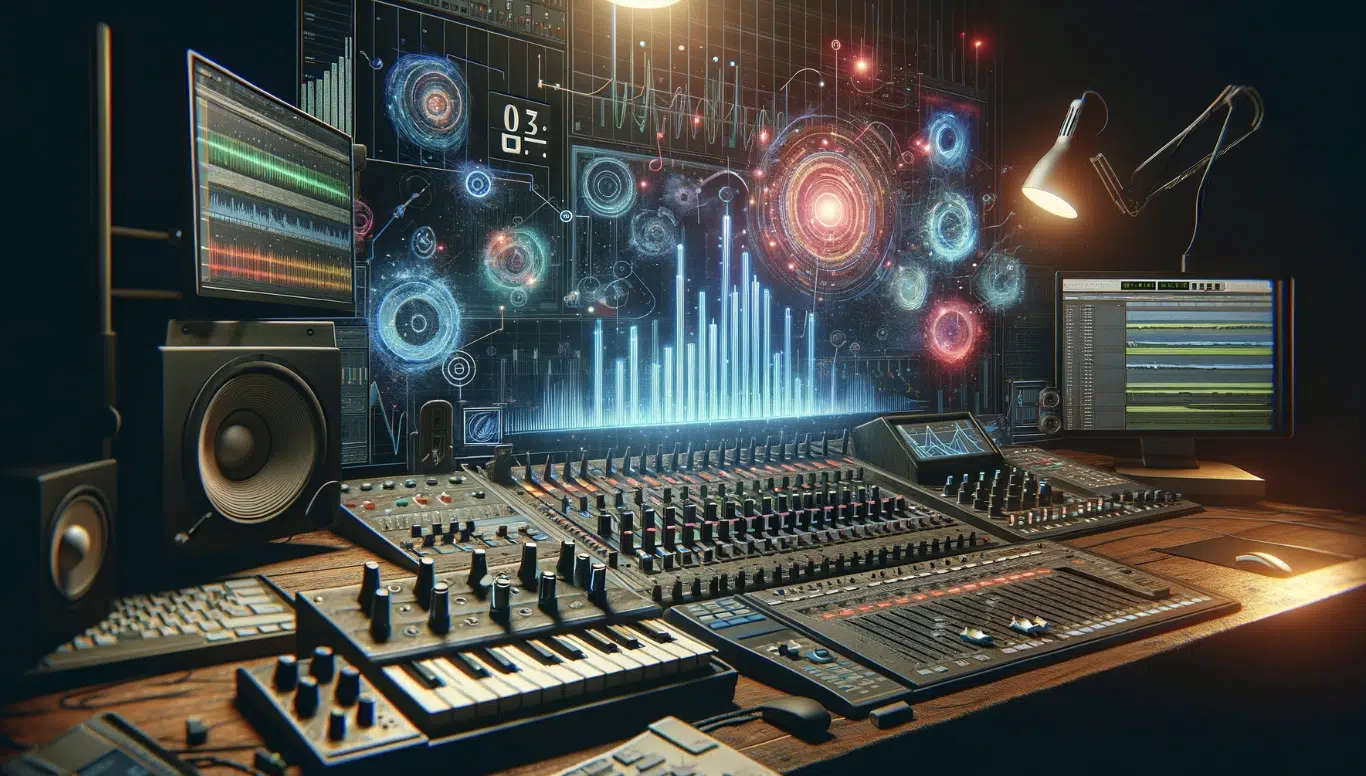
Maintaining a fresh approach to songwriting is essential for longevity in the music industry.
This means, when you write a song, you should constantly:
- Seek new inspiration
- Explore different styles
- Stay open to new songwriting techniques
- Utilize reference songs to grow & learn from
A fresh approach can involve experimenting with unconventional song structures.
Or even dabbling in genres outside your comfort zone (like pop music) or working with other songwriters 一 adding a unique twist to your own music.
Incorporating the latest trends in digital music production can also keep your hit song sounding current and relevant.
However, it’s crucial to balance trendiness with authenticity.
Your own music should always reflect your own styles and musical identity.
This will ensure that your hit song remains true to your artistic vision while appealing to modern audiences.
The Technical Side: Time Signatures and Rhythms
Understanding the technical aspects of music is crucial for any songwriter. Let’s delve into the importance of time signatures and rhythmic variations in songwriting so you can ensure each one sounds good.
-
Time Signature: The Foundation of Rhythm
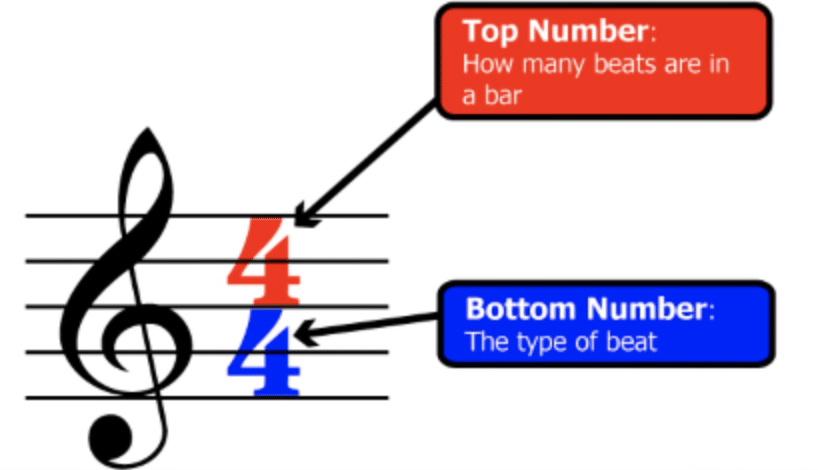
If you want to learn music theory, the time signature is a fundamental aspect that dictates the rhythm and pace of a song.
It determines how beats are grouped within a measure, influencing the song’s overall feel and groove.
NOTE: Common time signatures like 4/4 are widely used in popular music, but exploring different time signatures can add a unique rhythmic quality to your songs.
Understanding and experimenting with various time signatures can open up new possibilities in songwriting.
It allows for the creation of a hit song with different rhythmic feels, from the standard 4/4 to more complex patterns like 3/4 or 6/8.
This knowledge is a powerful tool in crafting a hit song that stand out and capture the listener’s attention.
Additionally, being adept with time signatures aids in the songwriting process, especially when it comes to aligning lyrical phrasing with the music’s rhythm.
It ensures that the song lyrics flow naturally with the song’s beat, enhancing the overall musicality and listener experience.
-
Rhythmic Variations in Songwriting
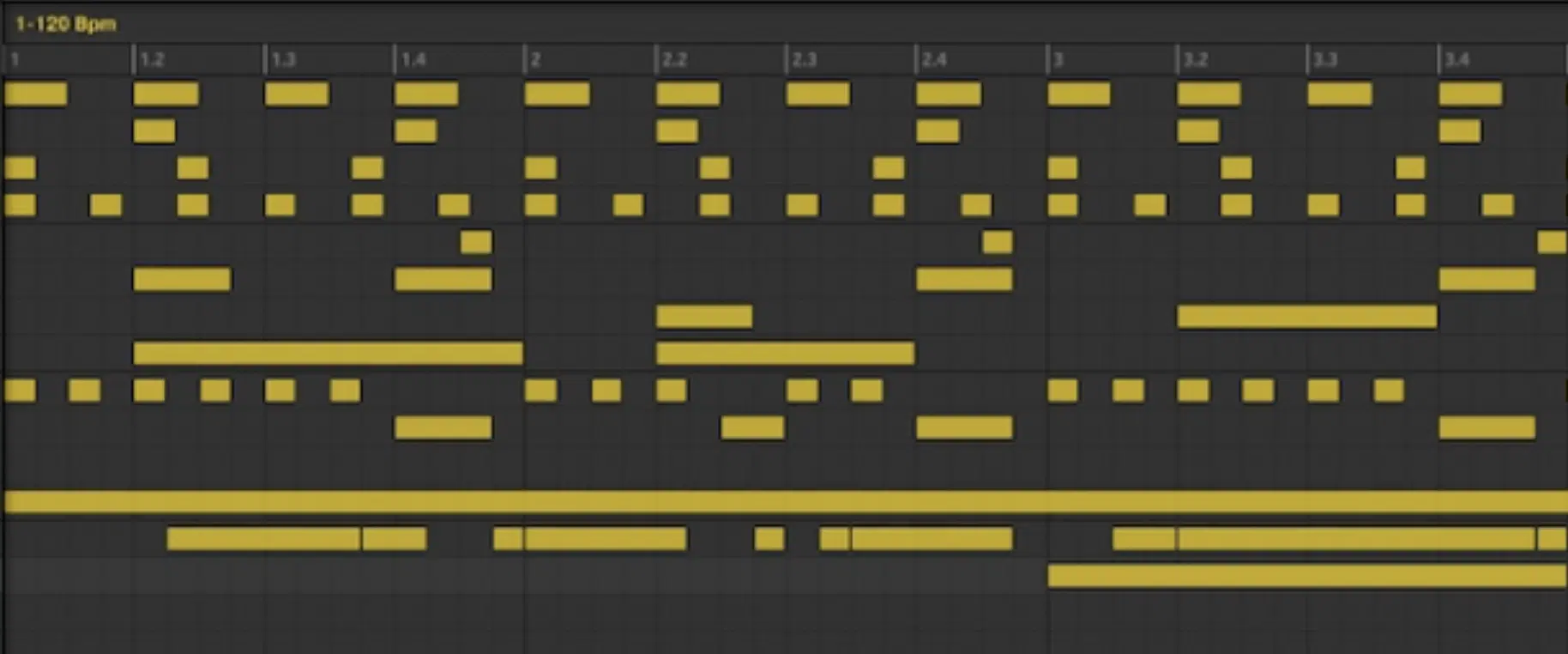
Rhythmic variations play a significant role in keeping a complete song interesting and dynamic.
When you write songs, altering the rhythm between different sections of a song (such as the verse and chorus) can create a sense of movement and progression.
This variation helps to maintain the listener’s attention and adds a layer of sophistication to the song.
Try experimenting with different:
This can lead to innovative and captivating songs that resonate with listeners on streaming platforms (which we spoke about earlier).
NOTE: Incorporating different rhythmic patterns or syncopation can also add interest to your songs.
This technique involves placing emphasis on beats or parts of beats where it’s not typically expected 一 creating a more engaging and unpredictable rhythm.
It’s a skill that, when mastered, can significantly enhance the appeal of your songs.
For digital music producers, the use of software and digital instruments offers endless possibilities for creating unique rhythms.
So, make sure to explore these different techniques to create chart-topping tracks.
Final Touches: Refining Your Song
The last stage of songwriting involves refining and polishing your song to perfection. Let’s explore how to give your complete song the final touches it deserves.
-
Polishing Your Song: Verse, Pre-Chorus, Chorus
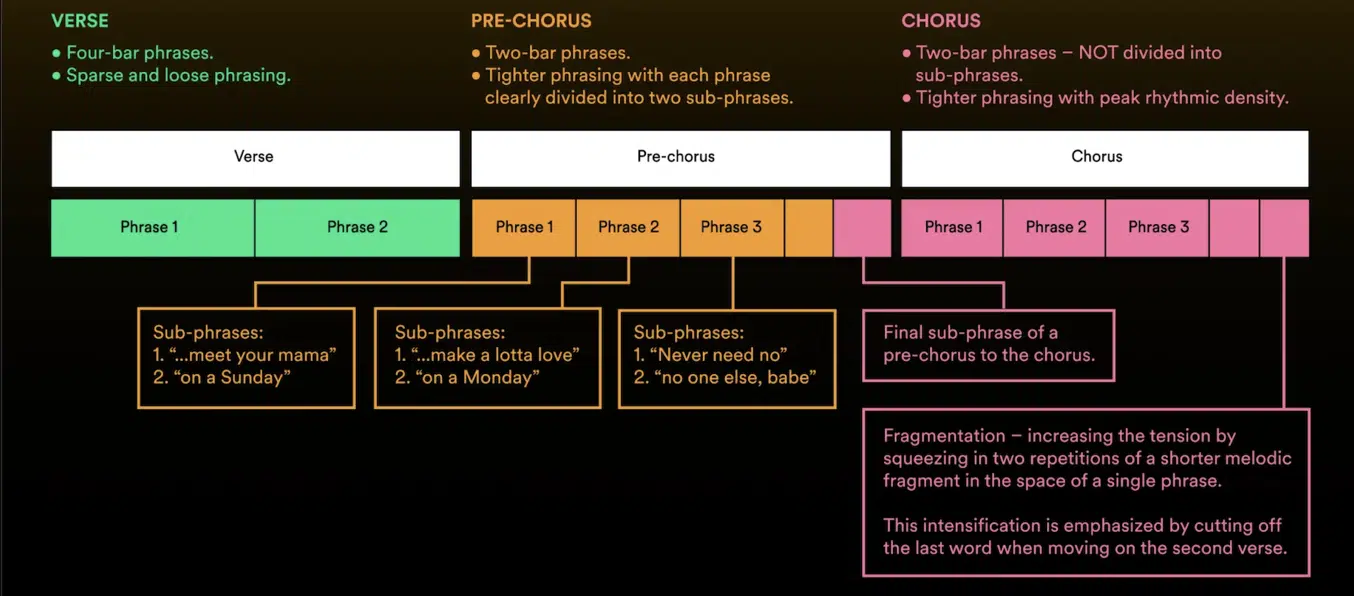
Polishing your song involves revisiting each section – the verse, pre-chorus, and chorus – and ensuring they all work together harmoniously.
It doesn’t require a professional studio, but it may include tweaking the song lyrics for better flow or adjusting the melody for more impact.
As well as refining the chord progressions for a smoother transition between sections.
Achieving a balance where each part contributes to the song’s overall narrative and emotional impact is key.
It ensures that the verse sets up the pre-chorus effectively, and that the chorus delivers the song’s main message with maximum effect.
Attention to detail is key in this phase…
For instance, ensuring that the second chorus offers a slight variation from the first can keep the complete song engaging.
This could be achieved through:
- Added vocal harmonies
- A change in instrumentation
- A shift in dynamics
These subtle differences can significantly enhance the song’s appeal and memorability.
Finally, it’s important to ensure that each section aligns with the song’s overall tone.
Consistency in mood and message across the verse, pre-chorus, and chorus helps to create a cohesive and compelling song that stands out on streaming platforms.
-
The Final Chorus: Leaving a Lasting Impression

The final chorus is your last opportunity to leave a lasting impression on the listener.
It should be the culmination of the song’s emotional journey, delivering the main message with clarity and power.
This is where you want to ensure that your chorus is at its most impactful, possibly incorporating additional layers or a higher intensity to drive the song home.
One music technique to enhance the final chorus is to modify it slightly from previous choruses.
This could involve:
- A key change
- An added vocal riff
- A richer arrangement
Such modifications can elevate the energy and ensure that the song ends on a high note, leaving the listener wanting more.
It’s also crucial that the final chorus ties together all the song’s elements 一 lyrical themes, melodies, and musical motifs.
This provides a sense of closure and completeness, ensuring that the song feels complete and polished.
A strong final chorus can make the difference between a good song and a great one, making it memorable and likely to be replayed by listeners.
Bonus: The Unison Songwriting Secrets Pack
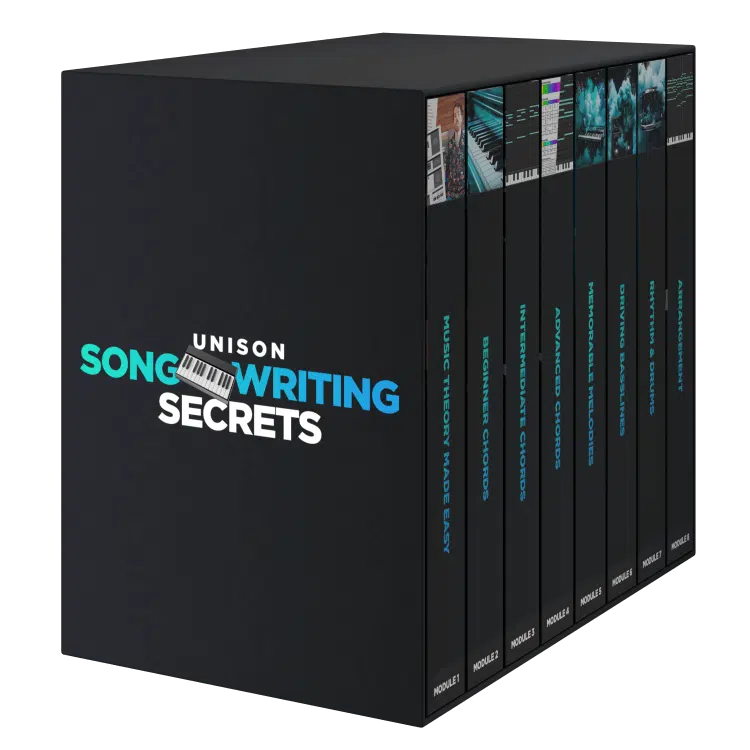
The Unison Songwriting Secrets pack is an invaluable resource for music producers and songwriters aiming to enhance their songwriting skills.
This comprehensive course, designed for all skill levels, provides over 9 hours of training videos covering a broad range of topics.
It includes everything you need to know about songwriting, including:
- The basics of music theory
- Advanced techniques
- Intriguing chord progressions
- Melody creations
- Song arrangements
- Etc.
It will give you the knowledge to write hit songs across various popular genres.
The pack’s strength lies in its detailed and structured approach.
It begins with fundamental concepts and progressively delves into more complex aspects of songwriting, including writing mind-blowing basslines and drum patterns.
This makes it an essential tool for anyone looking to write professional-quality songs, create deep emotional connections with listeners, and achieve recognition in the music industry.
Its adaptability to all DAWs and focus on practical skills make it a go-to resource for both aspiring and seasoned music creators.
So, if you’re serious about songwriting, this legendary pack is invaluable.
Songwriting Template: Final Thoughts
A well-crafted songwriting template is a key to unlocking your musical potential.
This guide has equipped you with the knowledge to utilize these templates effectively, blending them with your creativity and technical skills.
With this newfound arsenal of songwriting strategies, you’re now ready to compose music that not only stands out but also truly resonates with your audience.
Remember, the journey of a music producer or songwriter is one of constant learning and evolution.
Use these insights as your foundation, and let your unique musical voice shine through in your creations.
Keep experimenting, keep refining, and most importantly, keep sharing your music with the world.
Until next time…







Leave a Reply
You must belogged in to post a comment.